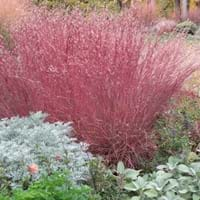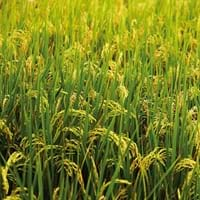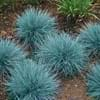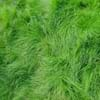Origin
North America, United States, Northeastern United States, Mid-Atlantic United States, Southeastern United States, North-Central United States, Central United States, South-Central United States, Southwestern United States, Mexico
Eastern Africa, Northern Africa, Southern Asia, Southeastern Asia
Types
Greener Pastures
Akia Beruin Red, Ofada Rice, Topaz
Number of Varieties
Not Available
Habitat
Grassland
Muddy habitat
USDA Hardiness Zone
4-9
8-15
AHS Heat Zone
10 - 3
12 - 1
Sunset Zone
1a, 1b, 2a, 2b, 3a, 3b, 4, 5, 6, 7, 8, 9, 10, 11, 12, 13, 14, 15, 16, 17, 18, 19, 20, 21, 22, 23, 24
Not Available
Habit
Clump-Forming
Clump-Forming
Minimum Height
Not Available
Minimum Width
Not Available
Flower Color
Purple
White
Flower Color Modifier
Bicolor
Bicolor
Fruit Color
Not Available
White
Leaf Color in Spring
Light Green
Green
Leaf Color in Summer
Light Green
Light Green
Leaf Color in Fall
Red, Purple
Green
Leaf Color in Winter
Tan
Not Available
Leaf Shape
Grass like
Grass like
Plant Season
Summer, Fall, Winter
Summer, Fall
Sunlight
Full Sun, Partial Sun
Full Sun
Growth Rate
Fast
Very Fast
Type of Soil
Loam, Sand
Clay, Loam
The pH of Soil
Acidic, Neutral, Alkaline
Acidic, Neutral, Alkaline
Soil Drainage
Well drained
Average
Bloom Time
Late Summer, Early Fall
Not Available
Tolerances
Drought
Wet Site, Salt
Where to Plant?
Ground
Ground
How to Plant?
Divison, Seedlings
Seedlings, Transplanting
Plant Maintenance
Medium
Medium
Watering Requirements
Medium
Keep plant submerged in water
In Summer
Lots of watering
Ample Water
In Spring
Moderate
Lots of watering
In Winter
Average Water
Consistently
Soil pH
Acidic, Neutral, Alkaline
Acidic, Neutral, Alkaline
Soil Type
Loam, Sand
Clay, Loam
Soil Drainage Capacity
Well drained
Average
Sun Exposure
Full Sun, Partial Sun
Full Sun
Pruning
Remove damaged leaves, Remove dead branches, Remove dead leaves
No need to prune
Fertilizers
All-Purpose Liquid Fertilizer
Fertilize the soil before planting, Phosphorous, Potassium
Pests and Diseases
Red blotch
Bacteria, Birds, fungus, Nematodes, Rats, Snails, Viruses
Plant Tolerance
Drought
Salt, Wet Site
Flowers
Showy
Insignificant
Flower Petal Number
Single
Single
Foliage Texture
Fine
Medium
Foliage Sheen
Matte
Matte
Attracts
Butterflies
Birds
Allergy
Not Available
Not Available
Aesthetic Uses
Showy Purposes
Not Used For Aesthetic Purpose
Beauty Benefits
Not Available
Good for skin
Environmental Uses
Air purification
Air purification, Prevent Soil Erosion
Medicinal Uses
Not Available
Energy, High blood pressure, Skin Disorders, Swelling
Part of Plant Used
Leaves, Root
Seeds
Other Uses
Showy Purposes
Starch, Used as a nutritious food item, Used As Food
Used As Indoor Plant
No
No
Used As Outdoor Plant
Yes
Yes
Garden Design
Cutflower, Dried Flower/Everlasting, Groundcover, Mixed Border, Rock Garden / Wall
Container, Dried Flower/Everlasting, Edible, Herb / Vegetable, Houseplant, Tropical, Water Gardens
Botanical Name
ERAGROSTIS spectabilis
ORYZA
Common Name
Purple Lovegrass
Rice
In Hindi
eragrostis spectabilis
चावल
In German
eragrostis spectabilis
Reis
In French
eragrostis spectabilis
riz
In Spanish
Eragrostis spectabilis
arroz
In Greek
eragrostis spectabilis
ρύζι
In Portuguese
Eragrostis spectabilis
arroz
In Polish
Eragrostis okazałe
ryż
In Latin
Eragrostis spectabilis
rice
Phylum
Magnoliophyta
Magnoliophyta
Class
Liliopsida
Liliopsida
Order
Cyperales
Cyperales
Clade
Angiosperms, Commelinids, Monocots
Not Available
Tribe
Eragrostideae
Not Available
Subfamily
Chloridoideae
Not Available
Number of Species
Not Available
Not Available
Difference Between Purple Lovegrass and Rice Plant
If you are confused whether Purple Lovegrass or Rice Plant are same, here are some features about those plants to help you choose better. Many people think that these two plants have the same characteristics, but one can see Purple Lovegrass and Rice Plant Information and learn more about it. Fertilizers required for proper growth of Purple Lovegrass are All-Purpose Liquid Fertilizer, whereas for Rice Plant fertilizers required are Fertilize the soil before planting, Phosphorous and Potassium. Hence, one should know the basic difference between Purple Lovegrass and Rice Plant if you are planning to have them in your garden to enhance its beauty.
<
Flowering PlantsImportance of Purple Lovegrass and Rice Plant
Want to have the most appropriate plant for your garden? You might want to know the importance of Purple Lovegrass and Rice Plant. Basically, these two plants vary in many aspects. Compare Purple Lovegrass and Rice Plant as they differ in many characteristics such as their life, care, benefits, facts, etc. Every gardener must at least have the slightest clue about the plants he wants to plant in his garden. Compare their benefits, which differ in many ways like facts and uses. The medicinal use of Purple Lovegrass is Not Available whereas of Rice Plant is Energy, High blood pressure, Skin Disorders and Swelling. Purple Lovegrass has beauty benefits as follows: Not Available while Rice Plant has beauty benefits as follows: Not Available.
Compare Facts of Purple Lovegrass vs Rice Plant
How to choose the best garden plant for your garden depending upon its facts? Here garden plant comparison will help you to solve this query. Compare the facts of Purple Lovegrass vs Rice Plant and know which one to choose. As garden plants have benefits and other uses, allergy is also a major drawback of plants for some people. Allergic reactions of Purple Lovegrass are Not Available whereas of Rice Plant have Not Available respectively. Having a fruit bearing plant in your garden can be a plus point of your garden. Purple Lovegrass has no showy fruits and Rice Plant has no showy fruits. Also Purple Lovegrass is not flowering and Rice Plant is not flowering . You can compare Purple Lovegrass and Rice Plant facts and facts of other plants too.





